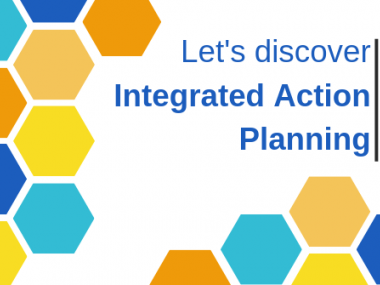
Understand better what integrated action planning means in practice by reading the findings of a comprehensive study - commissioned by URBACT and led by E40 Group -of the 205 Integrated Action Plans (IAPs) produced by towns and cities involved in the 20 URBACT Action Planning Networks (APNs) 2016-2018.
Find links to the full report, executive summary and seven URBACT-city IAP case studies below. The case studies are presented as illustrative examples of the diversity identified in terms of the various aspects of integrated action planning and the differences in approach and focus seen between different cities and different URBACT networks and themes.
Main conclusions
- The study suggests that URBACT Action Planning Networks are directly and effectively meeting their objectives in terms of improving the capacity of cities to design integrated strategies for sustainable urban development
- An Integrated Action Plan is a valuable tool in defining what a city plans to do next on a particular theme. But for many cities, the process of developing the Integrated Action Plan is even more valuable, in terms of transforming cross-departmental cooperation, local stakeholder involvement, understanding of thematic challenges and possible integrated solutions.
- The Integrated Action Plans have strong implementation potential, however they are not best understood as ‘investment-ready’ project plans, but rather ‘living’ documents whose implementation will come from ongoing stakeholder and urban-authority engagement, including feeding into new projects and funding applications.
- The key impetus and main achievement of the URBACT Action Planning Networks is to drive more integrated approaches to sustainable urban development, rather than developing more detailed plans. It can already be challenging to bring in and consider so many new ideas, perspectives and interrelationships in sustainable urban development – particularly when the theme being worked on is a relatively new area of work for the city.
- The study breaks down the complexity of ‘integrated action planning’ into 14 understandable aspects under three main categories: 1. integrated planning processes involving stakeholders; 2. defining actions to achieve integrated urban development; and 3. elaboration of an action plan that is detailed, coordinated and coherent.
- Despite their existing value and the legitimacy of much of the variation and diversity seen in the Integrated Action Plans, URBACT can still help cities to be more systematic about the way they address the complexity involved in integrated action planning and more structured in setting out their plans, including in terms of what needs to be in the action plan and where the place is for reporting on the rich URBACT journey that led to the plan.
Headline recommendations for URBACT
1 Support cities further to systematically address all aspects of Integrated Urban Development, for example by providing tools and guidance for cities to consider, prioritise and report against each aspect and creating a formal stage in the process to assess and improve the integrated nature of the emerging action plan.
2 Improve the guidance on detailed action planning, for example by separating more clearly the reporting from the action planning, further encouraging the use of action tables, offering training on weaker aspects, or defining an overall workflow for integrated action planning so that cities can track and justify where they have got to.
3 Improve the guidance on detailed action planning, for example by separating. Continue to strengthen and improve integrated planning processes, for example by showcasing best URBACT Local Group (ULG) practice or undertaking specific work with Lead Experts on how transnational exchange can work differently on different themes.
Main documents
Case Studies
